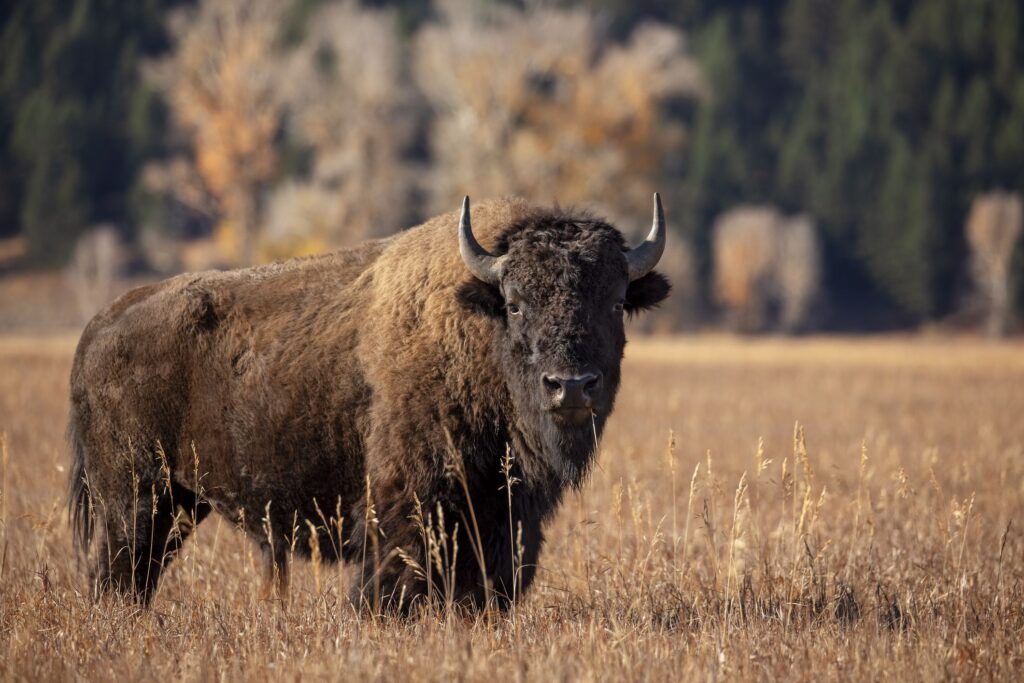The American bison and the European bison (wisent) are the largest surviving terrestrial animals in North America and Europe. They are typical artiodactyl (cloven hooved) ungulates, and are similar in appearance to other bovines such as cattle and true buffalo. They are broad and muscular with shaggy coats of long hair. Adults grow up to 6 feet 7 inches in height and 11 ft 6 inches in length for American bison and up to 6 ft 11 inches in height and 9 ft 6 inches in length for European bison. American bison can weigh from around 880 to 2,800 pounds and European bison can weigh from 1,800 to 2,200 lb. European bison tend to be taller than American bison.

Bison are nomadic grazers and travel in herds. The bulls leave the herds of females at two or three years of age, and join a herd of males, which are generally smaller than female herds. Mature bulls rarely travel alone. Towards the end of the summer, for the reproductive season, the sexes necessarily commingle.

American bison are known for living in the Great Plains, but formerly had a much larger range, including much of the eastern United States and parts of Mexico. Both species were hunted close to extinction during the 19th and 20th centuries, but have since rebounded. The wisent in part owes its survival to the Chernobyl disaster, as the Chernobyl Exclusion Zone has become a kind of wildlife preserve for wisent and other rare megafauna such as the Przewalski’s horse, though poaching has become a threat in recent years. The American Plains bison is no longer listed as endangered, but this does not mean the species is secure. Genetically pure B. b. bison currently number only about 20,000, separated into fragmented herds—all of which require active conservation measures. The wood bison is on the endangered species list in Canada and is listed as threatened in the United States, though numerous attempts have been made by beefalo ranchers to have it entirely removed from the Endangered Species List.

American bison tend to graze more, and browse less than their European relatives. Their anatomies reflect this behavioral difference; the American bison’s head hangs lower than the European’s. The body of the American bison is typically hairier, though its tail has less hair than that of the European bison. The horns of the European bison point through the plane of their faces, making them more adept at fighting through the interlocking of horns in the same manner as domestic cattle, unlike the American bison, which favors butting. American bison are more easily tamed than their European cousins, and breed with domestic cattle more readily.
